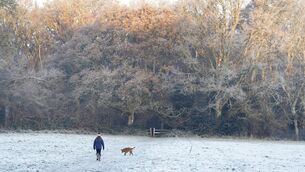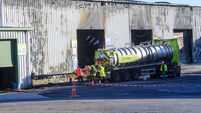Village tale pulls wool over visitor’s eyes
Or so a piece in the British magazine New Statesman would have readers believe.
Its columnist Shazia Mirza “eloped” to Ireland last week and was whisked off to Castlemartyr by her Irish friend Maria — presumably on a horse and cart. The comedienne waxed lyrically: “There were six houses in this village, surrounded by fields and sheep, where people live the idyllic, simple life. They have shops where they still use tills and calculators, and brown paper bags to put your groceries in. Plastic bags haven’t yet arrived there. They still have pump attendants at the petrol station.”
At this point, one must put her comments in perspective. When she says “people talk to you at random on the street” she probably enjoys the fact they do not have the brummie accents to which she would have been exposed growing up in the wilds of Birmingham.
When she says “I could go for a walk along the long country roads at midnight and not worry about being stalked” she is probably referring to the fact English cities, like cities everywhere, do have a certain undesirable element lurking after dark.
One must wonder, though, who goes for a walk at midnight in Castlemartyr — apart from the rich and misguided tourists staying at the five-star Capella hotel.
One of the comments that certainly bemuses is the “everyone wears wool and fleece” line.
The villagers must be especially well-off to make expensive wool their only fabric of choice. And this may be Ireland, but the sun does appear sometimes and Castlemartyr has not found its way into the annals of history as the town with the worst body-odour problem.
One comment you are unlikely to see on the suggestion cards when guests check out of the Capella is: “Lovely hotel but why did you locate it in a ghost town populated by wool cardigan wearers waving brown bags?”












